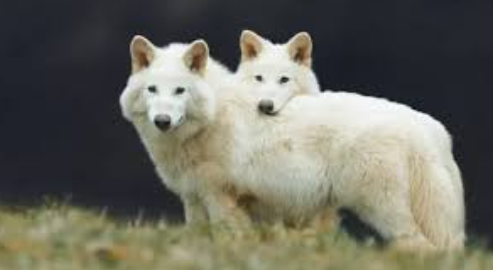The recent claim by a U.S. biotechnology company regarding the genetic resurrection of the long-extinct dire wolf has generated widespread engagement. This canine species, which disappeared around 10,000 years ago and was similar in size to the modern gray wolf, has prompted skepticism among scientists regarding the validity of the claim. Furthermore, significant ethical considerations have been raised concerning the potential housing and survivability of such animals in the wild.
For some background context, the dire wolf isn’t exactly a dire wolf; it’s a gray wolf hybrid, so this so-called resurrection is not a case of de-extinction. The modifications were made to a tiny part of the genome of a grey wolf that they knew would produce a white coat. The wolves, that are in hiding, may look like the long-extinct dire wolf; however, more than 99.9% of the genome of the pups is grey wolves. So this raises a question: Since this wolf is indeed a hybrid, should this issue hold any ethical concern at all?
With this new introduction and title of a de-extinct animal, there must be caution not to do more harm than good. Too often, scientists rush to do something without considering the potential consequences. Scientists will preach that it’s necessary to take a strict approach and argue for absolute safety before any action. Ipswich High School teacher, Ms. Latimer, speaks more on this topic. “We need international rules of what they can and can’t do. No one company should do it just because they can” she preaches. Little evidence has been made public about the social and ecological interactions the dire wolves had with their ecosystem; it is hard to say if any harm will be done.
Daniel Sulmasy, the director of the Kennedy Institute of Ethics and the Emergent Ethics Network, stated that, “It is scientifically significant to extract genes from the remains of extinct animals and insert them into a living organism in which they function. We need, however, to be careful about hype in scientific communication.” This argument is entirely ethical. Just because something can be done does not mean that we have to do it, and for what cause are we doing it for?
Thousands of years ago, when dire wolves existed, they lived in a specific niche just like many other animals did in the last glacial period. Since then, their niche has changed drastically, so we cannot expect them to re-enter the ecosystem. Ms. Latimer added to this, saying that the wolves must be raised in captivity; “You can’t release them back into the wild, and you can’t expect them to know what to do.” With this in mind, she hopes policymakers and scientists think more deeply about projects like this one, where the scientists should have anticipated the outcome.
As I chatted about the ethics behind the dire wolves with some of my peers from Ipswich High School, senior Jenny White believed we are overstepping our role in nature. “It’s kinda like we’re playing God here,” she stated. “I don’t think it’s okay to alter the past and bring back a species that went extinct for a reason unknown to us.” Another Ipswich High School teacher, Ms. LaFrance, holds a different opinion. She believed that “humans have done the best they could with the technology we have.” She also came up with a very interesting point: “We should focus and be urgent to prevent current ongoing extinctions,” adding that we ought not to give too much publicity to already extinct species.




